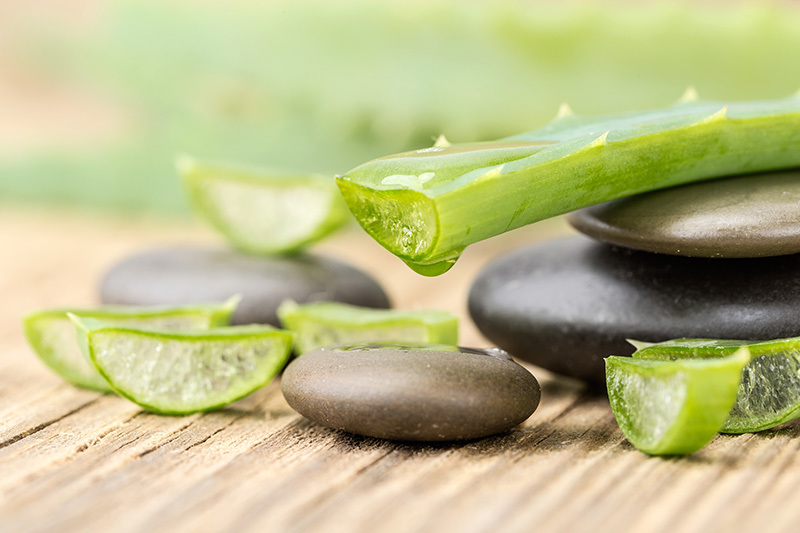Discover How to Keep Poinsettias Flourishing
Posted on 13/08/2025
Discover How to Keep Poinsettias Flourishing: The Ultimate Guide
Are you captivated by the vibrant colors of poinsettias during the festive season? Ever wondered how to keep poinsettias flourishing all year long? While many treat these gorgeous plants as temporary holiday decor, poinsettias (Euphorbia pulcherrima) can actually be kept healthy and beautiful long after the holidays have passed. In this comprehensive guide, we'll walk you through every essential step needed to help your poinsettias thrive-from choosing the right plant and providing optimal care, to encouraging rebloom and solving common problems. Let's unlock the secrets to healthy, flowering poinsettias!

Understanding Poinsettias: More Than Just Holiday Plants
The vivid red and green foliage of poinsettias has become synonymous with Christmas, but did you know the colored 'petals' are actually bracts--modified leaves? The true flowers are the modest yellow clusters at the center. Native to Mexico and Central America, poinsettias are subtropical shrubs that can flourish indoors and even outdoors (in USDA zones 9-11).
With the right poinsettia care, these amazing plants can bloom year after year, adding a splash of color and cheer to your home well beyond the winter months.
Why Poinsettias Lose Their Appeal
Many poinsettias decline and lose leaves after the holidays. This is usually due to mistreatment or misunderstanding of the plant's needs. If you want long-lasting beauty, you'll need to learn how to care for a poinsettia with confidence.
How to Choose a Healthy Poinsettia
Keeping poinsettias flourishing starts at purchase. Here are some tips for selecting a robust plant:
- Inspect the foliage: Healthy poinsettias will have rich, dark-green leaves free of spots, discoloration, or wilting.
- Look for yellow buds in the center: These are the actual flowers. They should not be shedding pollen or looking dry, which indicates age.
- Check the stems: The best poinsettias have sturdy, upright stems and no signs of breakage or disease.
- Avoid plants in drafty or cold store entrances; cold damage can be fatal for poinsettias.
- Choose a full, balanced shape for the best display at home.
The Best Ways to Keep Poinsettias Flourishing All Year
Setting Up the Perfect Environment
- Light: Place your poinsettia near a bright, indirect light source. A south- or east-facing window is ideal, but avoid direct midday sun, which can scorch the leaves.
- Temperature: Poinsettias like temperatures between 65-75?F (18-24?C) during the day and around 60?F (15?C) at night. Avoid exposure to cold drafts, excessive heat, or temperature swings.
- Humidity: As subtropical plants, they prefer moderate humidity. If your air is very dry, try grouping plants or using a humidity tray.
Watering Your Poinsettia Like a Pro
Overwatering is the number one reason poinsettias don't flourish. To master poinsettia care:
- Water when the top inch of soil feels dry. Stick your finger in to test moisture.
- Let excess water drain away--never let your plant sit in water, or root rot will develop.
- Reduce watering frequency once blooming season is over, but don't let the soil fully dry out.
A good rule of thumb: It's better to underwater than overwater.
Fertilizing for Vigorous Growth
To keep your poinsettias healthy and vibrant:
- Fertilize monthly during the growing season (spring and summer) with a balanced, water-soluble fertilizer diluted to half strength.
- Don't fertilize when the plant is in bloom (October-December).
- Start fertilizing again only after the plant has finished blooming and the colored bracts start to fade.
Air Circulation and Positioning
Good air circulation is important, but avoid direct blasts from heaters or air conditioners. Rotate your plant every few days to ensure even growth and exposure to light.
After the Holidays: Long-Term Poinsettia Care
Transitioning Post-Bloom
After the holidays, your poinsettia's colored bracts will gradually fade and drop. Many people mistakenly discard the plant, but with proper care, it will regrow new foliage and even rebloom next year.
- Continue moderate watering, allowing the soil to dry slightly between waterings.
- Move the plant to a cooler spot (about 60?F/15?C) in late winter if possible, and cut back slightly on water.
- Prune back stems in March or early April to about 4-6 inches above the soil to encourage compact, bushy growth.
- Repotting in spring with fresh soil can invigorate growth.
Encouraging New Growth: Spring & Summer Maintenance
Come spring, move your poinsettia back to a bright location. Begin feeding with fertilizer monthly, and keep the soil evenly moist.
- To encourage a full, symmetrical plant, pinch back new stems every few weeks until midsummer.
- You can even move plants outside to a shaded patio when nights are consistently above 60?F (15?C), but be careful to avoid direct sun and bring them in before autumn.
How to Get Poinsettias to Bloom Again: The Rebloom Process
Photoperiodism: The Key to Flowering
Poinsettias are 'short-day' plants, meaning they require long, uninterrupted periods of darkness to initiate blooming. To trigger colorful bracts for the next holiday season, you must mimic natural winter light conditions.
- Start the darkness regimen in late September or early October.
- Each night, place the plant in total darkness (such as a closet or under a box) for 14 hours--no streetlights, TV, or indoor lights.
- Return the plant to bright, indirect light for 10 hours during the day.
- This cycle must be maintained for 8-10 weeks.
- Keep temperature between 60-70?F (15-21?C.)
Within 6-8 weeks, the bracts should begin to color up, ready to brighten your winter home again.
Troubleshooting: Solving Common Poinsettia Problems
Leaf Drop
- Sudden loss of leaves is often due to drafts, temperature swings, or overwatering. Keep conditions stable and never let your plant sit in water.
Yellowing Leaves
- Frequent cause: Overwatering. Let the soil surface dry slightly before watering. If the condition persists, check the roots for rot and repot if necessary.
Dull or Droopy Bracts
- This is usually a sign of too little light or extreme temperatures. Move the plant to a brighter spot and ensure temperature is within the recommended range.
Pest Infestations
- Whiteflies, aphids, and spider mites can attack weakened poinsettias. Rinse leaves with a gentle stream of water and treat infestations with insecticidal soap as needed.
Root Rot
- Always use containers with drainage holes and well-draining soil to prevent waterlogged roots.
Poinsettias Year-Round: Creative Display and Uses
Poinsettias can be more than seasonal centerpieces! Here are some inspiring ways to use and display healthy poinsettias throughout the year:
- Potted arrangements: Mix poinsettias with other indoor plants for a striking display.
- Outdoor containers: In frost-free climates, poinsettias thrive shaded patios or entryways.
- Garden bedding: In subtropical zones, they can be planted directly in the ground for perennial appeal.
- Table accents: Carefully pruned, small poinsettias make lovely living centerpieces.
Frequently Asked Questions: Poinsettia Care
Are poinsettias toxic?
Contrary to popular belief, poinsettias are not highly toxic to humans or pets, but ingestion may cause mild tummy upset. Handle with care if you have curious pets or small children.
Can poinsettias grow outside?
Yes! In USDA zones 9-11, poinsettias can be grown as garden shrubs. In colder regions, bring them indoors before frost.
How long do poinsettias live?
With proper poinsettia care, these plants can live for many years, reblooming each winter if given the right light cues.

Embrace the Joy of Year-Round Poinsettia Care
To keep poinsettias flourishing, remember these vital principles:
- Choose a healthy plant and provide stable temperature and humidity.
- Water cautiously, letting the soil dry slightly between waterings.
- Fertilize regularly after blooming for lush growth.
- Give enough light but avoid harsh, direct sunlight.
- Encourage reblooming with proper light/dark cycles in autumn.
- Troubleshoot problems promptly for a thriving plant.
With these steps, you'll transform your holiday poinsettia into a flourishing houseplant that brightens every season. Embrace poinsettia care as a rewarding hobby and enjoy the vibrant beauty of these classic holiday plants all year long!
Final Thoughts: The Secrets to Lush, Long-Lasting Poinsettias
Keeping poinsettias flourishing isn't difficult with a little know-how. By providing the right environment, consistent care, and a bit of patience, you'll enjoy their brilliant color and uplifting spirit far beyond the holiday season. Take pride in nurturing this living symbol of cheer--and let your flourishing poinsettia be a testament to your green thumb!
Latest Posts
How red roses became a Valentine's Day staple
Make Valentine's Day Special with These 5 Charming Flowers
Discover How to Keep Poinsettias Flourishing
Decoding the Language of Birth Month Blossoms
Low Maintenance and Lovely: Discover the Best 10 Office Plants





